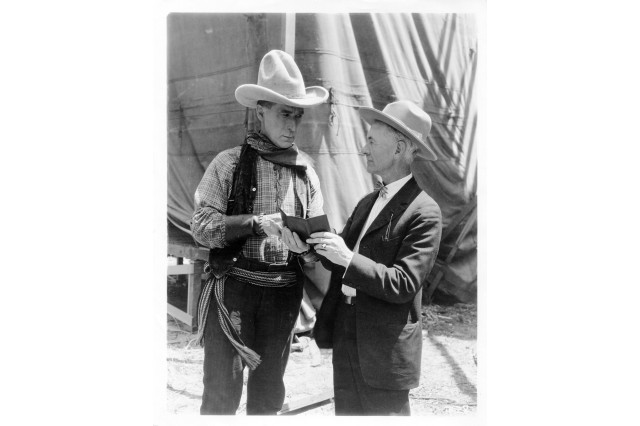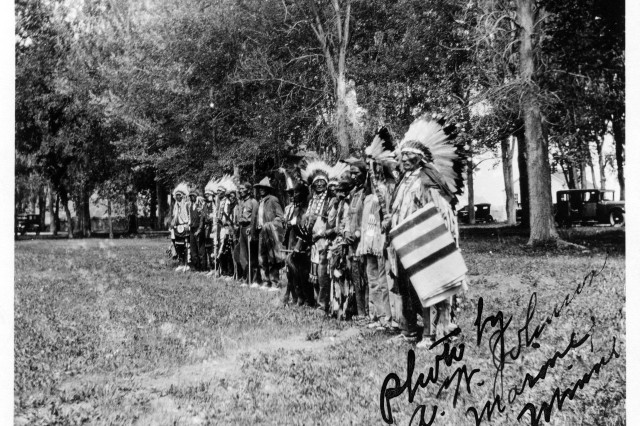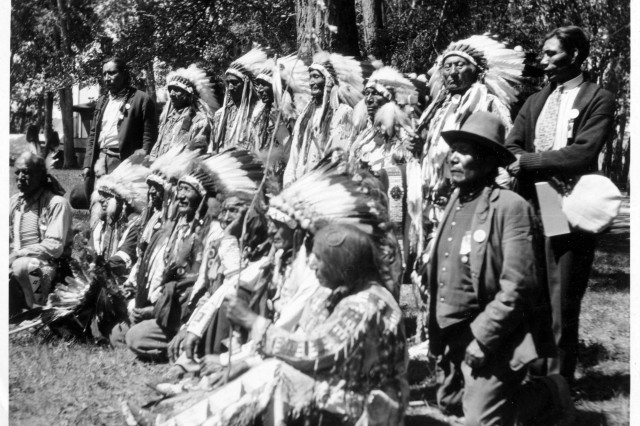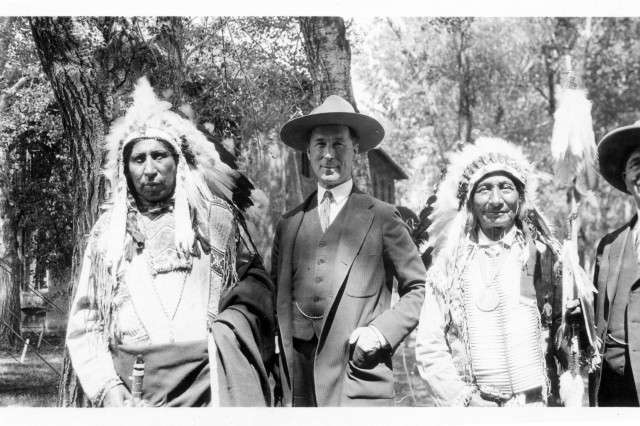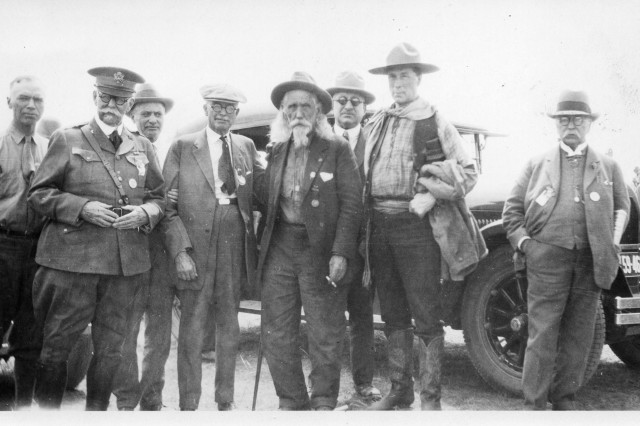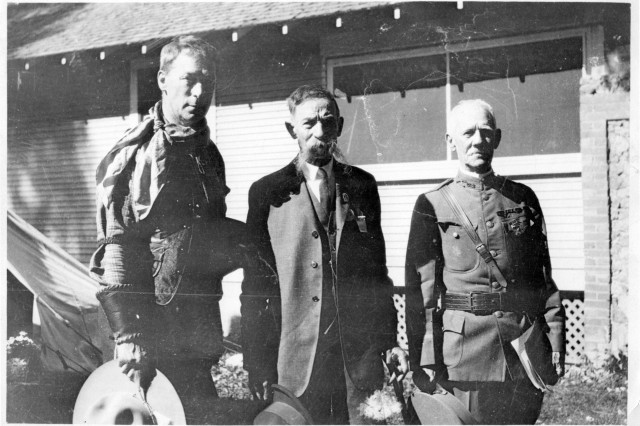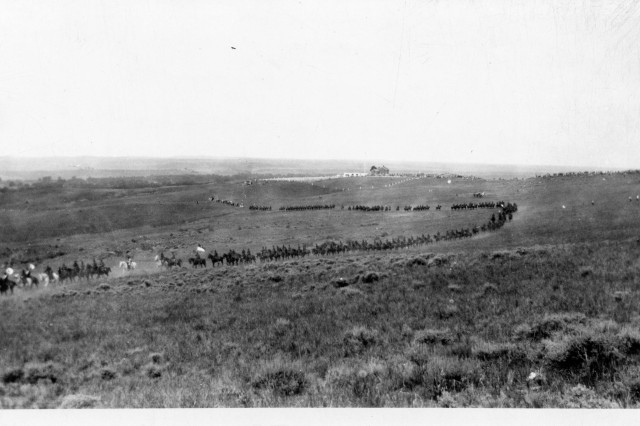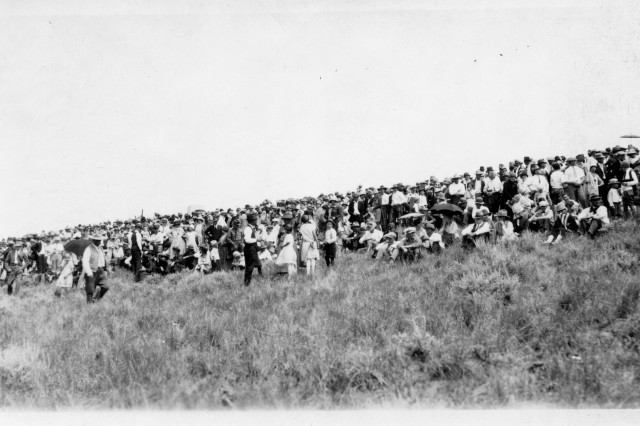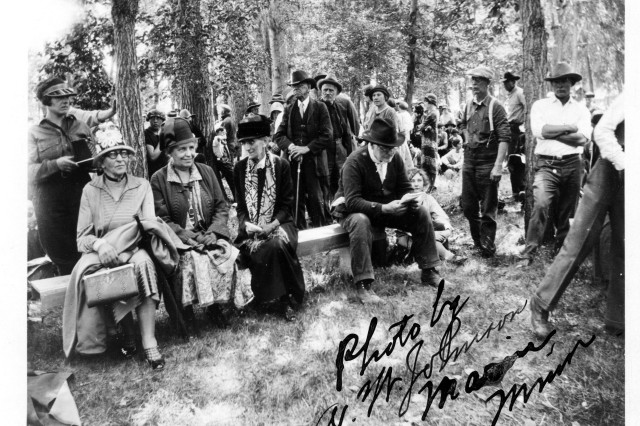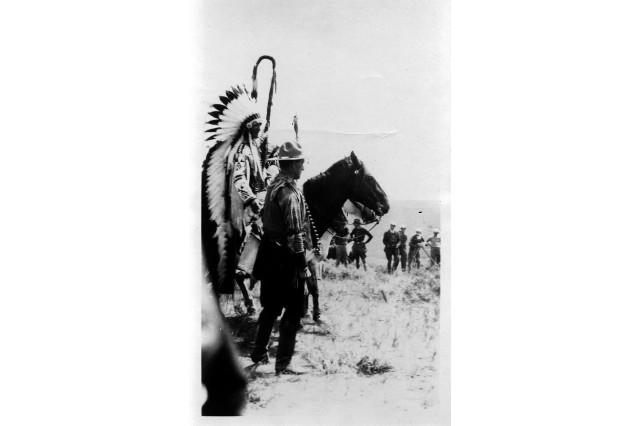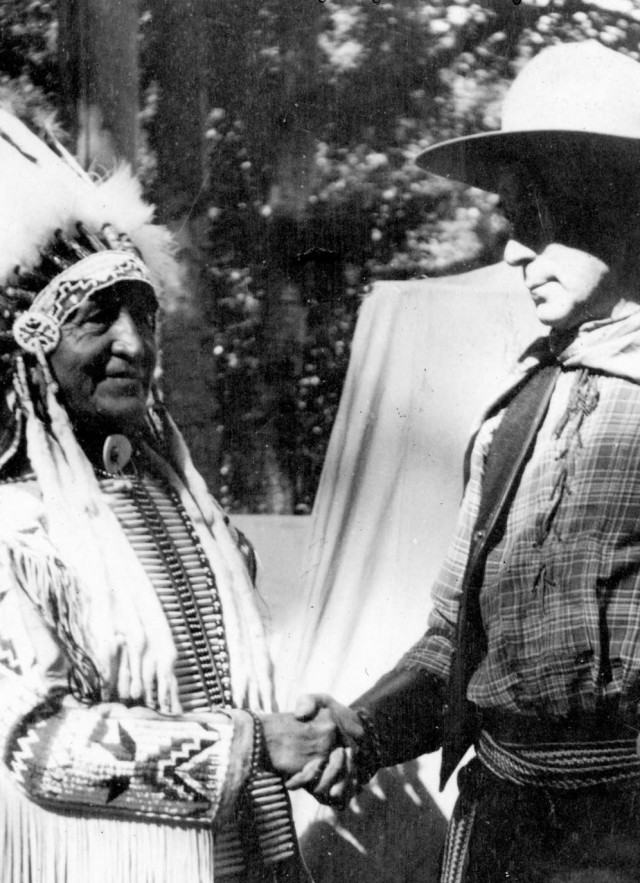
Written by Kim Walters
June 25 - 26, 2020 marks the 144th anniversary of the Battle of the Little Bighorn or The Battle of the Greasy Grass as it is referred to by the Native American descendants of those who participated, and historically as Custer’s Last Stand. This was an armed engagement between combined forces of the Lakota, Northern Cheyenne, and the Arapaho tribes and the 7th Calvary Regiment of the United States Army lead by General George Armstrong Custer. The result of the battle was the defeat of the U.S. forces, which was the most significant action of the Great Sioux War of 1876. The battle took place along the Little Bighorn River on the Crow Indian Reservation in the southeastern Montana Territory.
The Seaver Center for Western History Research has vast holdings of photograph collections. One important collection is the William S. Hart Photo Collection, which has several thousand images covering Hart’s extensive acting career both on the stage and silent films, his personal life, other activities, and his family. After scanning the images, I conduct research to provide enriched data for the description of the photographs. In so doing I became interested in investigating a group of 48 photographs that are labeled “Custer Semi-Centennial,” and found that Hart attended the June 1926 Custer Semi-Centennial celebrations in Montana. In the 1870s and 1880s Hart and his family were living in Indian country of South Dakota where his father was employed in the construction of grain elevators. Hart wrote a brief description of the 1876 battle, in his autobiography, My Life East and West and towards the end of the book (pages 349-350), he also mentions participating in the semi-centennial.
Hart appears in many of the images with Native American chiefs, such as White Bull, Standing Bear and Jim Red Cloud, as well as with Brigadier General Edward S. Godfrey, a veteran of the Battle of the Little Bighorn serving under Captain Benteen, and Colonel Fitzhugh Lee who took command of the 7th Calvary from Fort Bliss, Texas, beginning in 1919. Approximately half of the 48 images are taken by cowboy poet and author, E.A. Brininstool. The images relating to the celebration all date to June 24 - 26, 1926 and are representative of the semi-centennial celebration.
According historian Douglas McChristian “The fiftieth anniversary afforded a unique opportunity for a reunion of the aging combatants. Promoters of the semi-centennial realized that the ranks of Little Bighorn survivors, both red and white, were thinning with each passing year. For the veterans, time had tempered some of the old animosities. It seemed a good time to reflect and symbolically ‘bury the hatchet’ while there was still time.” The leaders of the towns around the battle site saw the 50th anniversary celebration as a way to gain tourist income as well as to acknowledge the participants. Speeches were given by several of the participants, J.E. Erikson, Brigadier General Godfrey, White Bull and Old Two Moons. Montana Governor J.E. Erikson who acknowledged Custer as a hero.
“Here we are commemorating the fiftieth anniversary of the tragic event which marked the grimmest of the long and bloody Indian wars which preceded the winning of the west.” “When the soldiers who had General George A. Custer was one of the bravest, most daring and dashing soldiers of his day.”
The speeches were ethnocentric and patronizing towards Native participants. McChristian goes onto state that “the various activities, speeches, and hatchet-burying gestures served only to reaffirm, in the minds of whites at least, the ultimate virtue of progress over savagery in America's crusade for empire. Most whites would continue to venerate Custer as a martyr who died in the cause of civilizing the West.”
The documented reports for the weekend state that nearly 50,000 people attended the event, driving there in at least 3,000 automobiles. The attendees were treated to an over flight by an Army Air Corps squadron, re-enactments on the field with the modern 7th Cavalry standing in for the 1876 troops, and Crow Indians portraying the victorious Lakota and Cheyenne. The 7th Calvary led the spectators into the battlefield. There were native encampments along the river.
Native attendees included, White Man Runs Him, the only surviving Crow scout attached to General Custer's command, and Lone Wolf, a Northern Cheyenne who was a veteran of the battle. Among the thousands of attendees were also 122 United States Army Indian Wars veterans, including Fremont Kipp, Daniel Newell, William Slaper, William Morris, Theodore Goldin, Peter Thompson, Charles Windolph, and Edward S. Godfrey, all of whom participated in the Battle of the Little Bighorn.
Historian McChristian summarizes several articles from the Billings Gazette to discuss William S. Hart’s participation in the celebrations:
“A sidelight to the events at Crow Agency was western film star William S. Hart's arrival in Billings.” He added further that “Hart traveled to Montana with his Lakota friend and film sidekick, Standing Bear, to witness the semi-centennial. Hart made it clear he was not on hand to promote himself… Promoters in Billings quickly took advantage of the windfall to herald the actor's arrival at Union Station on Wednesday evening. Movie fans of all ages jammed the station to catch a glimpse of their Stetsoned idol as he stepped from the train. Hart shook as many hands as possible as he pressed his way through the crowd to a waiting car that whisked him away to the Northern Hotel. Later, … Hart appeared at the Babcock Theater where he formally greeted the citizens of Billings between double features. He rounded out the evening by judging a beauty contest at a dance sponsored by the local Moose Lodge. The next day he and Standing Bear traveled to Crow Agency to camp among the Lakotas. The Sioux revered Hart for his efforts on their behalf. He helped to organize and underwrite the Indian Welfare League in Los Angeles. In appreciation of his work, the Lakotas used the semi-centennial to honor Hart, bestowing upon him the name ‘Crazy Horse.’ Nearly one thousand Indians attended the sacred ceremony at the battlefield, from which all but a few whites were excluded. True to his desire to remain out of the spotlight, Hart maintained a low profile. He refused to discuss the movie business with reporters, believing it improper in context of the commemoration, and vanished from news coverage once events were underway.”
Over the last twenty-five years, there have been re-enactments which normally take place in June on the anniversary of the battle and are sponsored by the Crow Indian family Real Bird. These events have Native participants, the U.S. Calvary School from Ft. Harrison, Montana and other re-enactors, but the events are not held at the Battlefield. The re-enactment and festivities take place on the banks of the Little Bighorn River between the Little Bighorn National Monument and Museum and the town of Garryowen, Montana’s Custer’s Battlefield Museum. Unfortunately, because of the COVID-19 pandemic the re-enactments have been cancelled for 2020.
Through this research I have identified other online resources that are relevant to telling the story of the semi-centennial events, such as the Montana Newspaper Project which provide first-hand accounts of the June 25-27, 1926 programs, http://montananewspapers.org/search/advanced/ The Digital Public Library of America also provides links to archives around the United States that have cataloged digital collections relating to the Custer Semi-Centennial or the 50th Anniversary Celebrations many of which are held by the Montana State Historical Society https://mhs.mt.gov/research/online and The State Historical Society of North Dakota https://www.history.nd.gov/archives/index.html.
Visit the William S. Hart Museum, one of the three museums that form the Natural History Museums of Los Angeles County.
References
Arlington National Cemetery. “Edward Settle Godfrey” obituary and background. Accessed May 22, 2020. http://www.arlingtoncemetery.net/egodfrey.htm
Big Timber Pioneer, The. “Memory of Gen. Custer” vol. xxxvii, no. 34, July 1, 1926, front page, page 6. Accessed May 2020 http://montananewspapers.org/lccn/sn84036123/1926-07-01/ed-1/seq-1/ and http://montananewspapers.org/lccn/sn84036123/1926-07-01/ed-1/seq-6/
Billings Gazette various articles from June 23, 24, 1926 covering William S. Hart’s arrival in Montana.
Fitzhugh Lee Papers, University of Michigan, Clements Library. Accessed May 22, 2020. https://quod.lib.umich.edu/c/clementsead/umich-wcl-M-4551.2lee?rgn=main;view=text
Hart, William S. My Life East and West. New York: Houghton Mifflin Company 1929.
McChristian, Douglas C. "Burying the Hatchet: The Semi-Centennial of the Battle of the Little Bighorn." Montana: The Magazine of Western History 46, no. 2 (1996): 50-65. Accessed May 18, 2020. www.jstor.org/stable/4519879.
